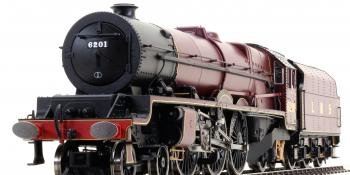Eclipsed in reputation by later and more famous designs, the ‘Princess Royal’ class ‘Pacifics’ of the LMS were nevertheless a radical step forward for that company. EVAN GREEN-HUGHES explains how the class started a golden era of West Coast steam.
THE LATER YEARS of the 1920s saw Britain shake off much of its historical social structure. Ordinary men and women who had experienced the war years and the deprivation that followed were no longer content to return to a life where they were confined to work and home or where they were the perpetual underdog. The roaring ‘20s had arrived, and with them came a thirst to travel.
Within this period there was a massive growth in demand for long-distance train journeys, particularly between England and Scotland. From 1923 this demand by supported by the London and North Eastern Railway (LNER) on the east side of the country and the London Midland & Scottish Railway (LMS) on the west. In the east, increased train weights and accelerated schedules had been catered for by new ‘Pacific’ engine designs yet, on the west, wrangling between supporters of the LMS’ constituent companies had resulted in a confused locomotive policy. It largely followed that of the former Midland Railway in usin…








